The Final
Goodbye
by Tamara Somerville
(aka: “Gidget’s Mom”) © 2013
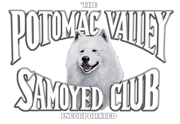





The Final
Goodbye
by Tamara Somerville
(aka: “Gidget’s Mom”) © 2013

Related Links





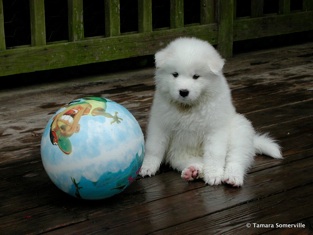



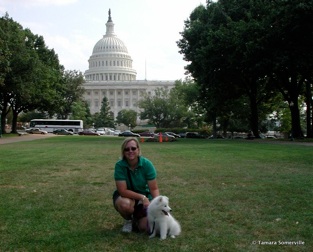

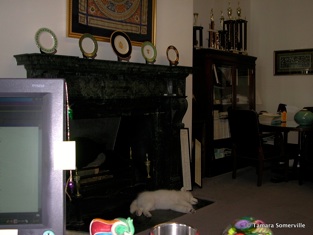



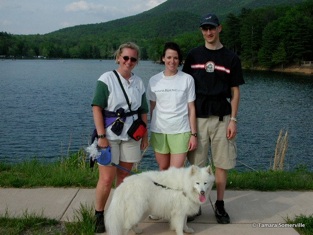
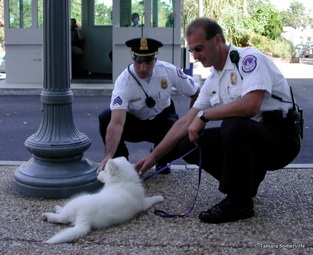



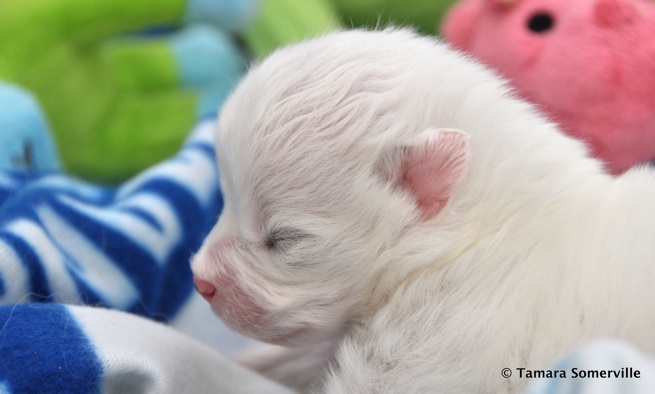






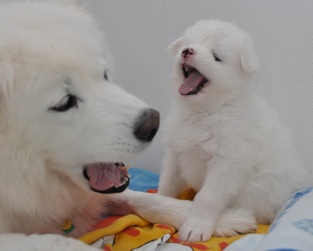

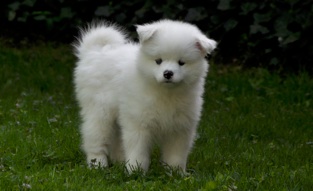

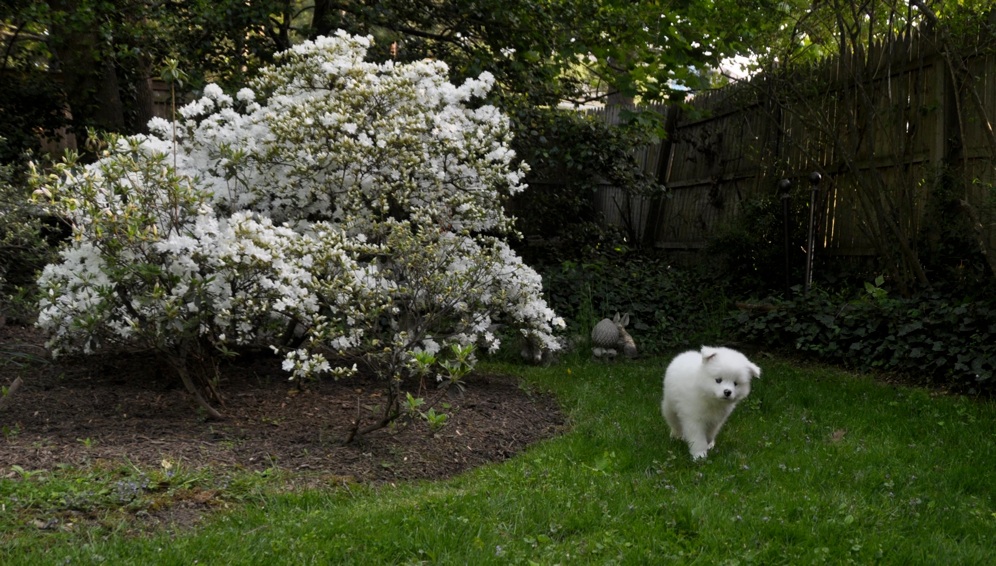

This website and PVSC are largely devoted to celebrating Samoyeds - the magnificence of the breed as well as the beauty, joy and exploits of the individual dogs in our lives. But there is another aspect to dog ownership that is inevitable and heart-wrenching: death, and the role we may have to play in choosing the time and manner of our dog’s passing.
This is a sorrowful subject. You may cry reading this. I’m crying writing it.
The best dog owners, the kind of people responsible breeders strive to place their puppies with, commit to care for their dog for that dog’s entire life. In sickness and in health, to borrow a phrase from that most sacred vow. Our dogs are completely reliant on us for everything: their nutrition, filling their water bowl, vaccinations, socialization, affection, exercise and for protection from the myriad perils such as cars, heatstroke, virulent mosquitoes, ticks and other threats to their health.
Maybe, if we’re lucky and diligent and they are genetically blessed, our Samoyeds will still be with us when they are fourteen or fifteen years old.
Their aging sneaks up on us. Unlike their dark-fur peers -- the black labradors, Belgian Sheepdogs and most other breeds -- grey is never evident among the Samoyed’s white coat. And the Samoyed’s trademark smile, good cheer and emotive plume tail project youthful vigor long after they have entered their “senior” years - defined by veterinarians as over seven years of age. My “Gidget” is eleven years old and some people she recently met assumed she was three. But, in the past year I am seeing that stairs and leaping into the SUV are no longer effortless. Gidget is now an old dog. I am grateful she’s made it this far. She barely dodged death via bloat eighteen months ago.
I have been on this path before. My first Samoyed, “Buck,” lived to be nearly fourteen. She (yes, Buck was a she) began slowing down and showing signs of arthritis around age ten. In her last few years, the veterinarian had her on a schedule of “wellness” checkups - including blood, urine and stool analysis - every six months. We all know about “dog years” and that for every calendar year that passes, our dogs have aged several. So six months for a dog is the equivalent to a few years for a person. A lot can happen in that time.
A few days before Christmas 2001, the veterinarian called with Buck’s semi-annual test results. I recognized the incoming number on my phone and expected to get two thumbs up on Buck’s health, just like always. I was at work (U.S. Senate), about to head out for a holiday lunch with colleagues. We needed to celebrate. I had just returned from an emergency trip to Oregon after my sister was hospitalized. 9/11 and the anthrax attacks in the Senate buildings had taken a toll, too. I was tired and eager for the holiday break.
The doctor’s voice was measured. She informed me that Buck’s liver enzymes were abnormal and she needed further testing. We scheduled an ultrasound for Christmas Eve. I was supposed to have Christmas dinner with friends but was distraught after the ultrasound confirmed chronic active hepatitis - probably due to the arthritis medicine (etogesic) she’d been on for years. Incurable, the doctor informed me, but treatable. So we treated her with eight pills a day and a radical new diet: no more kibble and from now on home-prepared meals made from organic vegetables, organic brown rice and organic chicken breasts - stir-fried with safflower oil (high in omega-3). She loved that food! Within a few weeks she displayed flashes of the zest and energy of her youth.
Within six weeks Buck’s liver enzymes were back to normal and I rejoiced. Two weeks after that her kidney values became abnormal. Two months later, after a vacation cut short by Buck’s vomiting, the doctor called me on a Thursday evening after a urinalysis. “We need to talk,” she said. “About quality of life.”
I made the appointment to euthanize on the following Monday. That weekend we had a last walk at Great Falls National Park with friends. I took photos. Buck ate steak and pizza. And then she wouldn’t eat anything. On Monday afternoon, I sat on the front steps, Buck situated between my legs in her familiar way so I could give her a massage as she kept watch on the street. Some neighbors gave Buck a final pat and squeezed my shoulder. We sat there until friends picked us up and drove us to the veterinary hospital and waited as I held Buck in my arms to be “put to sleep” forever. Seemingly instantaneously, as the hypodermic was pressed, she went limp. The life was gone from her brown eyes. “She was ready,” the doctor said.
I wasn’t, and convulsed with grief.
It had been just the two of us for nearly a decade. For the first couple weeks after she was gone, I’d “see” her out of the corner of my eye at home. Neighbors, accustomed to seeing us on our morning and evening walks, asked me where she was and consoled me when I could not get the words out. Children she knew delivered handmade sympathy cards featuring pictures approximating the Buck they remembered. Adult friends sent store-bought cards of paw prints in beach sand. I wore sunglasses everywhere to hide my swollen eyes and thought it a wonder that my heart had not exploded, such was the constricting pressure in my chest. It literally felt like a cement block was sitting on my chest, so tight was the sensation of sorrow.
That Buck had, by dog standards, lived a long and good life was of some intellectual solace but did not make me miss her any less. Eleven years later, I’m writing this while looking through teardrops on my glasses. I still have the cards, her collar and her favorite toy - “Mr. Frog” - that she used to heroically save whenever the “vacuum-monster” was in proximity. Nesting with these keepsakes is the old cell phone with one of her hairs entombed under the glass screen.
If you never knew me around my dogs or had missed seeing me cry during “E.T. the Extra-Terrestrial,” you wouldn’t think I was particularly sentimental. A professional acquaintance once blogged that I was “tough-as-nails.” Maybe where work is concerned, but not where dogs are concerned. Such is the magic of dogs.
In the months before Buck died, friends and family had asked if I would get another Samoyed. “Nope,” I replied. “Buck is irreplaceable. But I like the wolf-look so maybe I will get a Husky. Probably not for a few years, though, if ever.” I had inherited Buck from a roommate and had no familiarity with Samoyeds before her and no previous inclination to subject a dog to my busy work schedule.
Within two weeks of losing Buck I was desperate -- absolutely desperate -- for a Samoyed puppy. A dear friend from my college days had been my rock and guru through all this, though she lived in Colorado and our counseling sessions were all by telephone. We spent countless hours on the phone in those months between Buck’s diagnosis and death. A few years back, Buck had inspired her and her husband to get a Samoyed rescue, so she knew the breed. She’s an engineer and always did her homework. She’d owned dogs all her life. She advised me that Huskies, though similar and wonderful in many ways, are not Samoyeds. She was right. Buck could not be replaced, and there is no substitute for a Samoyed.
In what seemed a miracle worthy of a sappy Hallmark Hall of Fame flick, I soon learned (via Google) that a litter had been born on the night Buck died. And they were just twenty miles away. The breeder generously allowed me to visit with the puppies often. They were so healing and a poignant lesson on the natural cycle of life for dogs. I met them for the first time when they were two weeks old and took over a thousand photos during the next six weeks. They went to their new families when they were eight weeks old. “Rainbow Girl” came home with me. I named her: “Thatcher.” After British Prime Minister Margaret Thatcher.
Thatcher went to work with me every day. Congress is very dog-friendly, and I was in a particularly puppy-friendly office environment. I had a puppy nursery set up in my office; crate, x-pen, toys, food and water bowls. Thatcher was a rock star, as all sammy puppies are, and literally met several hundred people on Capitol Hill in her first week with me. I was besotted with my new sidekick.
In the middle of the night that she turned nine weeks old, I took her outside for her evening constitutional. She was oddly lethargic. When we came back inside she vomited and I picked her up and she burrowed into my arms. I rushed her to the 24/7 emergency hospital which had also been Buck’s regular vet. Within five minutes of examining her, the doctor informed me that Thatcher had brain damage. And I got a crash course in “congenital portosystemic liver shunt” which they suspected was the culprit. They kept her overnight to run more tests and monitor her condition. Because a non or poorly functioning liver is not cleansing the blood, a high-protein diet which is normally optimal for a puppy instead poisons them as toxins build up in their system. Thatcher was immediately put on a very low protein prescription diet and began “screaming” from apparent hunger which that food could not satiate.
I consulted with the breeders, doctors and others with Samoyeds who had experience with liver shunts. In sum, Thatcher’s prognosis was poor, surgical options were grim and she was screaming for protein. So, for the second time in a little over two months, I held my Samoyed as the hypodermic needle to end her life was inserted. This time there was the added dimension of young life cruelly and prematurely extinguished.
This grief was not mine alone. Her breeders had known her longer, had midwifed her into the world, grieved for her and felt badly for me. And they never again bred her mother, because though the exact catalyst for these congenital shunts is unknown, genetics could be at issue and so the parents should not breed again. They insisted on paying the considerable veterinary bills and refunded to me Thatcher’s purchase price. And so I gained some appreciation for the emotional and financial risks that breeders incur when they breed a litter. None of the responsible breeders are paid anywhere near what they deserve for a healthy puppy. None are immune from tragedies such as befell Thatcher.
When Buck and Thatcher died, I was not a member of PVSC. I had not even heard of PVSC until after Buck died. I now know the support group I was missing back then and I’ll be leaning heavily upon my PVSC friends in the future. I try not to dwell on that. Gidget’s lying near me right now, healthy and happy with, hopefully, years of good life ahead. One benefit of writing this is that these memories remind me to savor every good day, make more happy memories with Gidget and take thousands more photographs and videos. Every day with them is a gift, whether they are twelve years old or twelve weeks old.
In the end, the only comfort is that we did right by them while they were alive.
I’m writing about this because at this very moment a friend and fellow PVSC member is in the final hours before her puppy is scheduled to be euthanized. And my heart is breaking for her. She’s been grieving ever since the diagnosis a few weeks ago but had hoped for several months, maybe a year, of life for the puppy and was doing all she could to give her a happy life for whatever time she could have without suffering. The puppy had been diagnosed with congenital hydrocephalus - “water on the brain” - a situation with symptoms so similar to what Thatcher experienced that liver shunts, such as Thatcher had, are often suspected in the early stages of what this puppy is dealing with.
I have been privileged to know this puppy, “Folly,” since she was eleven days old. My friend was her breeder so she’s known Folly since birth and had the litter with the intention of keeping one of the puppies - progeny of her beloved Lark and Mokei. Folly was a “singleton” -- the only puppy to survive birth -- so was special, and challenged from the get-go. She had been born prematurely, via caesarean section, was very small and had needed supplemental oxygen in the early hours after birth. The pregnancy had been difficult for her mother and the newborn puppy needed close monitoring to ensure that she was getting sufficient nutrition in her first weeks. Several PVSC members volunteered to help with “Follysitting” and joked that she had ten mommies.
To be with puppies in their first weeks is a tremendous gift. I have had now a few opportunities to do so and am ever mindful of being in the presence of a miracle in progress. And so it was with Folly. We Follysitters fell in love with her before she opened her eyes. We admired her spunk and fortitude in the absence of littermates to huddle with for warmth. We fussed and carefully tended to her, making sure she always had her mother or fleece blanket nearby to snuggle. A corner of the whelping box was kept cozy with a heating pad under the bedding.
No one, not even her doctors, had an inkling of the dire diagnosis to come. We were happy for our friend and looked forward to watching this puppy grow up and join our pack of PVSC pups this summer and have fun running around together, playing and swimming and boating. I took hundreds of photos and posted them on Facebook and uploaded videos of Folly to YouTube.
Folly had a following and a future. Now she has mourners and our friend has a broken heart. Folly would have been thirteen weeks old tomorrow.
Her time on Earth was too short but not without joy. The brevity of her existence leaves sadness in her wake, but the good weeks she had were better for her than no life at all. We have to take comfort in that. We who knew her will smile at memories of her and her mom playing - of Folly chomping on Lark’s tail, paws and nose and Lark giving her big sloppy mom kisses in return. The puppy bows, the puppy “arfs,” the puppy teeth and the sweet puppy breath -- the indelible images of puppyhood will be the forever images of Folly because she never had a chance to outgrow them. I smile through tears at the photograph of itty-bitty pre-diagnosis Folly tucked under her mom’s muzzle - the two of them in peaceful slumber.
Folly, so frisky and vibrant a couple of weeks ago, declined precipitously in the past ten days. The neurosurgeon who has been monitoring her outlined some surgical scenarios but offered no assurances and little hope. He consulted with Folly’s regular veterinarian and they concurred that euthanasia at this time is the best and merciful course of action.
I was able to hug her goodbye in person and she licked my nose. I hugged her owner and we sobbed.
This article and the related links are for me and Folly’s mom and everyone who ever has or ever will lose a beloved pet. We know these pets we mourn are not “just dogs” or “just animals” or “just” anything. They made the world a better place and not just for us. We loved them, we cared for them and when necessary we made the hard decision to let them go. And it was among the most difficult, painful and loving things we will ever do.
All the dogs of our life - the ones we’ve owned and the ones we’ve known - have a place forever in our hearts and memories and hopefully a lot of new friends in an eternity we dog people, even agnostics, often refer to as “Dog Heaven.”
It is a comforting scenario, one I’m choosing to believe in. I hope they make room for people in Dog Heaven. It would be quite a reunion someday. I’d finally have more than one dog at a time.
“Buck”
1988-2002
“Thatcher”
2002-2002
“Gidget”
2002-present
“Lark”
&
“Folly”

